Allow me to describe and illustrate my attempt at a homemade plate reverb.
It was 2007. I’d just moved, and one of the things I moved was a big metal cabinet that my old roommate had left behind at the old place. There are steel shelves that go inside it, which you can adjust height-wise, or remove entirely. Here’s a picture of what I’m talking about.
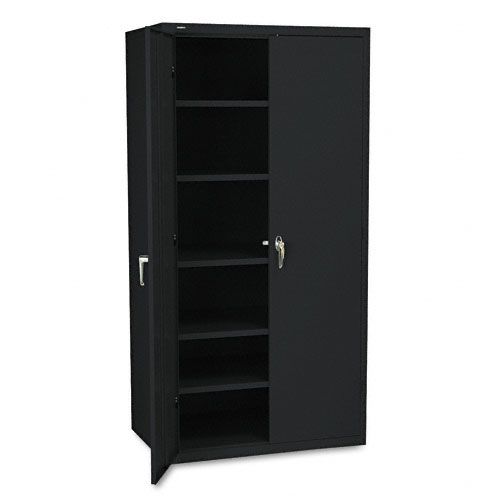
How? You can find good descriptions online, but in short: get a thin steel plate, stretch it within a frame, and attach a driver in the middle. The driver is like a speaker or solenoid — an electromagnetic coil to physically transfer an electrical audio signal into the plate so the plate vibrates. Run a wire from the driver to an amplifier, then run a cable from the output of your recording device to the amplifier. Elsewhere on the plate attach a microphone/transducer or two. Run a cable from the transducer(s) into a preamp, then into an input of your recording device.
Now that you’ve done all that, you can run a signal (say, a vocal track) from your recording device into the plate, then record the signal coming back from the plate and mix it with the original signal. The vocals will now have reverb.
Sounds easy. I had the plate, all I had to do was all the other stuff I just mentioned. So I did. First I made a frame out of 4×4 lumber and large wood screws I happened to have lying around.
One thing I should mention right away: a real EMT plate is 2 meters by 1 meter. That’s big. This was half that size, and I knew that going in.
I drilled holes in the plate and attached it to the frame using some crazy screw/hook/bolt fasteners I found at the hardware store. These would hold the plate at each corner and by tightening the bolts, stretch the plate, to “tune” it.
Next was the driver. I had seen online that others had success using a “contact speaker” to drive a plate. I bought a couple of those and stuck one of them onto the plate. To drive the speaker I needed an amplifier of some sort. I don’t recall exactly what I used but I had an amp of some kind and wired it in place (probably my old Sunn PA head).
Finally, I got a couple of piezoelectric contact pickup/transducers at Radio Shack and hot glued them onto the plate. I soldered their leads to some shielded audio cable terminating in 1/4″ phone plugs. These I ran into one of my mic pres.
I was ready at this point to run a test. I set up the plate in the same room as my computer audio interface and ran some recording through it.
I don’t recall what all I tested this first time. I know I ran drums through it and thought they sounded pretty bad. I’ve kept some reverbed vocal takes from an old song I was working on called “Saturday.” The first from 11/5/2007 is in mono, and it’s very noisy, picking up radio and generally not sounding that great. It’s also clipping. But it does sound like reverb:
I wanted to set up something more permanent, so I wouldn’t have to take amps and preamps away from other things to use on the plate. I was also going through one of my periodic bouts of wanting to understand electronics better, so I opted to try to make “permanent” components to round out the plate “system.” That is, to build a driver amp and preamps.
I should note that what I should have been doing during this time was working on my album (I was in the middle of Give/Sell). I was still in this phase where I thought I wanted to do things more analog instead of “in the box” computer recording like I was accustomed. I had a console/mixer setup to do analog summing and to incorporate outboard effects while mixing from the computer… boy what a waste of time that was. Hours and hours making cables. That’s another article though. The point is I figured I’d want to use my fancy new plate reverb on my album, so why not spend a few months building it?
I’d recently read an article in Make Magazine or somewhere describing how to make a tiny cheap guitar amplifier using an LM386 amplifier chip. This seemed like a promising path to building a tiny cheap “preamp,” of sorts. I built two of the circuit in one enclosure for stereo.
For the driver, I went to a thrift store and bought a set of used stereo computer speakers. Computer speakers are usually set up so that one of them has an amp in it and the other is passive. I hacked active speaker unit to isolate its amplifier section.
Note that I’m finally writing about this four years after the fact, so I’m having to rebuild events from the photo/audio evidence and from my hazy memory. Those last photos above are from 11/12/2007. The second audio track I have is from 11/15/2007. The audio is in stereo and quieter than the first track from the 5th. I seem to recall however that I didn’t use my new fake preamp for this, that I used a real preamp, but I think I did use the computer speaker driver, one channel of it.
Some months passed. I do recall some of what informs the next and last set of photos I have of this project, from 2/10/2008. I decided that using only one channel of the computer speaker driver was too quiet before distortion, so I opted to try bridging the channels. I did some research and decided the way to do this was to split the incoming mono signal into two 1:1 transformers, which would then pass the signal to the amp’s left and right inputs. The transformers would allow me to reverse the phase on one channel so that the speaker output of each channel would be phased opposite to the other. Then I could run the non-ground output wire from each channel into each side of a speaker, and have much greater output than one channel alone.
With regard to the preamps, I seem to recall them working, but being useless due to noise. Despite my limited electronics knowledge I understood the output impedance of the tiny guitar amp circuit was around 8 ohms, much lower than line level. To solve this I added impedance-matching transformers to the preamp circuit outputs, and then tried it again.
The fact that I can’t seem to find any audio from this phase of the project suggests that it failed. I seem to recall that both modifications worked, but the signal-to-noise ratio for the entire system was still too low. At some point I also decided that plugins were a lot easier to deal with than trying to cook up analog audio equipment from cheap components and limited knowledge.
I had the plate hanging in my basement for years before I finally took it down and disassembled the frame. All gone.
I did have one marginal bit of success though. The fake preamp made for a pretty nasty fuzz distortion on guitar. I used it on the chorus and solo for the song “Price” on my last solo album:
[wp_bandcamp_player type=”track” id=”4046260550″ size=”grande” bg_color=”#FFFFFF” link_color=”#4285BB”]
Come to think of it, I never checked the impedance of the piezos themselves. I should probably have done that.
Some plate resources
Here’s someone restoring an EMT 140. With video.
Lots of people have built plates, to various degrees of success.
- Here’s one in New Zealand. Also with video.
- Here’s another. If I try this project again I’ll try it this way.
- Here’s one that looks a lot like the one I made.
- And yet another.


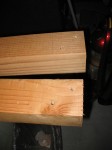
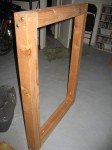

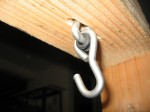
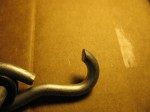

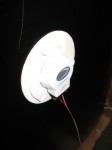
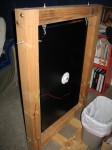
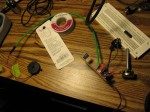
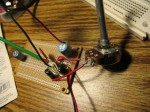
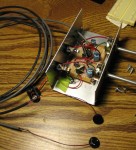
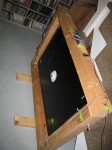

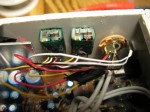
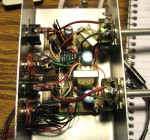
Pingback: Anatomy of a song – Sun Tunnels “Saturday” | Working Title